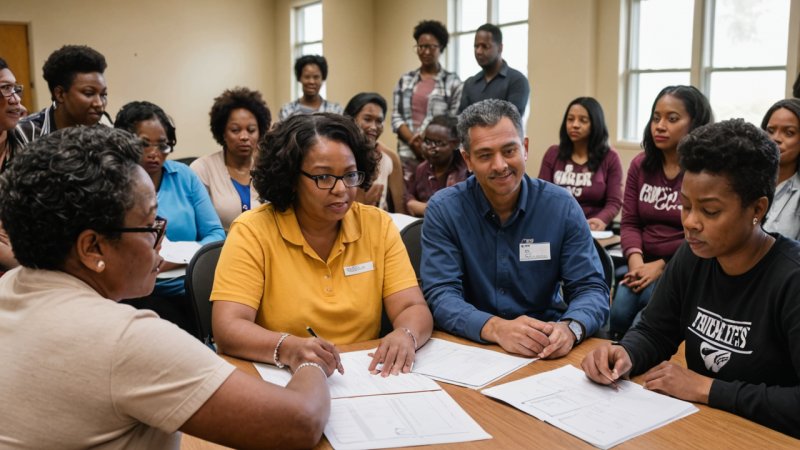In an age where community engagement and empowerment are more critical than ever, developing local leadership training programs stands out as a pivotal strategy for fostering sustainable change. These programs not only equip individuals with the necessary skills to lead but also cultivate a sense of ownership within communities, encouraging them to actively participate in their development. This article delves into the essential components of effective leadership training programs, highlights successful case studies, and provides actionable insights for those looking to initiate such programs in their own communities.
Understanding the Importance of Local Leadership
Leadership is often viewed through the lens of authority and hierarchy, but true leadership is about influence and the ability to inspire change. Local leadership plays a crucial role in community development as it helps bridge the gap between residents and decision-makers. By empowering individuals within the community to take on leadership roles, we can promote inclusivity and ensure that diverse voices are heard.
Benefits of Local Leadership Training Programs
- Building Capacity: Training programs enhance the skills and capabilities of community members, preparing them for leadership roles.
- Encouraging Civic Engagement: These programs foster a culture of participation, encouraging individuals to engage in local governance and decision-making.
- Strengthening Community Bonds: Collaborative training initiatives can create networks of support among participants, leading to stronger community ties.
- Promoting Sustainable Development: Local leaders are more likely to understand the unique challenges of their communities, allowing for tailored solutions that promote sustainability.
Key Components of Effective Leadership Training Programs
1. Needs Assessment
Before developing a training program, it is essential to conduct a needs assessment to identify the specific skills and knowledge gaps within the community. This can be achieved through surveys, interviews, and focus groups, allowing program developers to tailor their curriculum to meet the unique needs of the participants.
2. Curriculum Development
The curriculum should be designed to cover a range of topics relevant to leadership, including communication, conflict resolution, decision-making, and community organizing. Incorporating both theoretical knowledge and practical exercises will enhance the learning experience.
3. Training Methodologies
Utilizing diverse training methodologies can cater to different learning styles. Consider incorporating workshops, role-playing, group discussions, and mentorship opportunities to create an engaging and dynamic learning environment.
4. Community Involvement
Engaging community members in the program's development and implementation fosters a sense of ownership and accountability. Involving local leaders and stakeholders can also lend credibility and support to the initiative.
5. Evaluation and Feedback
Regularly evaluating the program’s effectiveness is crucial for its success. Collecting feedback from participants can provide insights into what is working and what needs improvement, allowing for ongoing adjustments to the program.
Successful Case Studies
1. The Leadership Institute in New Orleans
The Leadership Institute in New Orleans has successfully trained local leaders through a comprehensive program that emphasizes community engagement and practical skills. Their approach includes hands-on projects that allow participants to apply what they’ve learned in real-world situations.
2. The Young Leaders Program in Kenya
This program targets youth in marginalized communities, providing them with leadership training focused on social justice and civic engagement. By empowering young people, the initiative has led to increased participation in local governance and community development projects.
How to Get Involved in Local Leadership Training Initiatives
1. Assess Your Community’s Needs
Start by assessing the specific needs of your community. Engage with local residents to understand their challenges and aspirations, and identify potential leaders who can spearhead the initiative.
2. Partner with Local Organizations
Collaborating with existing organizations can provide valuable resources and expertise. Look for non-profits, educational institutions, or local governments that share your vision for leadership development.
3. Create a Training Committee
Form a committee of community members who are passionate about leadership development. This group can guide the program’s direction and ensure it remains aligned with community needs.
4. Promote the Program
Utilize social media, community meetings, and local events to promote the training program. Engaging the community in the promotion process can also spark interest and encourage participation.
5. Foster a Supportive Environment
Creating a supportive environment is essential for participants to thrive. Encourage collaboration, celebrate successes, and provide ongoing mentorship to help emerging leaders develop their skills.
Conclusion
Developing local leadership training programs is a powerful way to empower communities and promote sustainable change. By focusing on the unique needs of the community, creating engaging curricula, and fostering collaboration, we can cultivate a new generation of leaders who are equipped to tackle the challenges facing their communities. As individuals, we all have a role to play in this process, whether through direct involvement in training initiatives or by supporting those who are leading the charge. By investing in local leadership, we are investing in the future of our communities and the well-being of society as a whole.






